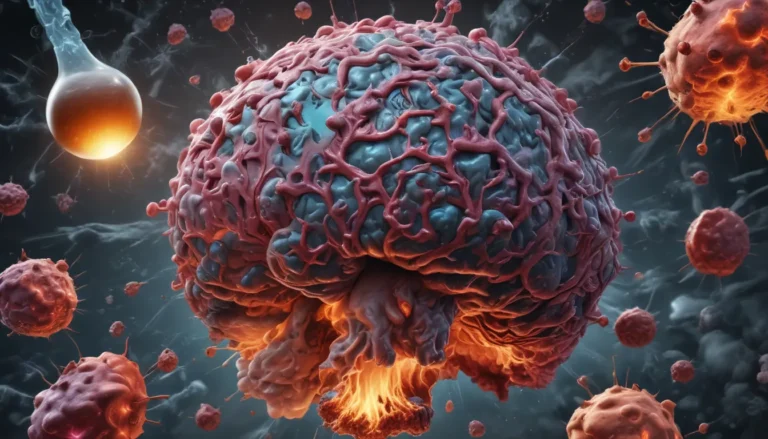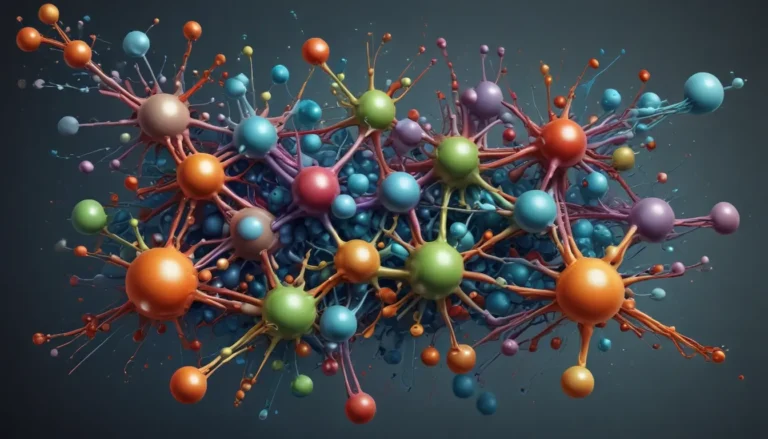A Note About Images: The images used in our articles are for illustration purposes only and may not exactly match the content. They are meant to engage readers, but the text should be relied upon for accurate information.
Biomineralization is a captivating natural phenomenon that underlies the creation of intricate mineral structures in living organisms, ranging from tiny bacteria to majestic marine creatures. This process involves the formation of inorganic minerals within organic matrices, giving rise to a diverse array of hard structures like shells, bones, and teeth. While biomineralization is a well-explored realm of science, there are numerous surprising facets that continue to intrigue researchers and enthusiasts alike. In this article, we will embark on a journey to uncover 18 intriguing facts about biomineralization, shedding light on its complexity and beauty. From the remarkable strength of biominerals to the fascinating role of environmental factors in shaping mineral formation, each fact unveils a new layer of wonder in the world of biomineralization. So, let’s embark on this exploration and delve into the captivating realm of biomineralization!
Key Takeaways:
- Biomineralization is a captivating natural process where living organisms construct unique and robust mineral structures. From microscopic bacteria to grand oceanic inhabitants, this process is nature’s own architectural marvel!
- This phenomenon extends beyond the creation of shells and bones, encompassing a vast spectrum of applications like vibrant butterfly wings and insights into the origins of life. It’s like a hidden superpower embedded within the fabric of life!
Biomineralization: Nature’s Masterpiece
Biomineralization stands as a compelling natural process observed in diverse living organisms, ranging from minute bacteria to vast marine beings. It entails the synthesis of inorganic minerals within organic frameworks, resulting in the development of complex and distinct structures.
Unveiling the Role of Biomineralization in Skeletal Development
Central to biomineralization is its pivotal role in the formation of skeletal structures in organisms. This process facilitates the provision of support, protection, and mobility, enabling organisms to thrive in their respective environments. For instance, mollusk shells and vertebrate bones are products of this intricate process.
The Extraordinary Properties of Biominerals
Biominerals often exhibit exceptional properties, including high strength, resilience, and self-repair capabilities. These remarkable attributes stem from the hierarchical organization of biominerals, which arise from precise growth and assembly processes.
Biomineralization Beyond Land-Dwellers
While biomineralization is commonly associated with terrestrial organisms, it also manifests in marine life forms. Corals exemplify this phenomenon by constructing elaborate reefs through biomineralization, thereby fostering habitats for a multitude of marine species.
Tracing Biomineralization Through Ancient Fossils
Scientists have unearthed traces of biomineralization in ancient fossils, indicating the enduring nature of this process over millennia. The preservation of minerals within fossils offers valuable insights into the evolutionary trajectory of life on Earth.
Environmental Influences on Biomineralization
The rate and characteristics of biomineralization can be influenced by environmental factors such as temperature, pH levels, and mineral availability. Changes in these parameters can significantly impact the formation and composition of biominerals.
Practical Applications of Biomineralization
The study of biomineralization has paved the way for practical applications in diverse fields like material science and medicine. Researchers are exploring ways to leverage the knowledge of biomineralization to develop novel materials with enhanced properties and to advance medical treatments.
Unraveling the Complexity of Biomineralization
Biomineralization entails a multifaceted interplay of biological, chemical, and physical factors. Organisms have evolved intricate mechanisms to regulate the growth, morphology, and composition of biominerals, yielding a myriad of complex structures.
Biominerals as Guardians of Environmental Records
Biominerals serve as historical records, encapsulating information about the environmental conditions prevailing during their formation. Scientists can analyze the composition and isotopic signatures of biominerals to glean insights into past climates and environmental shifts.
Unexpected Biomineralizers: Bacteria and Beyond
Biomineralization transcends conventional organisms like shells and bones, extending its reach to surprising entities such as bacteria and certain plants. This discovery broadens the scope of biomineralization, unveiling new dimensions of this captivating process.
Structural Coloration: A Biomineralization Marvel
The vibrant hues exhibited by certain organisms, like butterflies and peacock feathers, owe their brilliance to structural coloration orchestrated through biomineralization. The intricate arrangement of biominerals creates optical effects that engender vivid colors.
Biomimetics: Innovations Inspired by Biomineralization
The study of biomineralization has inspired scientists and engineers to develop cutting-edge materials and technologies through biomimetics. By emulating the principles of biomineralization, they seek to fabricate synthetic materials with enhanced properties and functionalities.
Biomineralization: The Mastermind behind Teeth and Enamel
The formation of teeth and enamel in vertebrates is intricately intertwined with biomineralization. Precise control over the deposition and organization of biominerals in teeth contributes to their strength and durability.
Diverse Crystal Structures in Biominerals
Biominerals showcase a diverse array of crystal structures, including intricate and unconventional formations rarely found in non-biological mineral matrices. These unique structures confer exceptional properties upon biominerals.
Biomineralization: A Subject of Scientific Inquiry
Scientists from varied disciplines, encompassing biology, chemistry, and materials science, are actively engaged in unraveling the mysteries of biomineralization to deepen our understanding of this intricate process.
The Genetic Influence on Biomineralization
The genetic composition of an organism exerts a profound influence on the biomineralization process. Genetic variations can give rise to disparities in the structure, composition, and characteristics of biominerals.
Waste Management through Biomineralization
Biomineralization processes are being explored as potential solutions for waste management. Certain microorganisms possess the ability to harness waste materials and convert them into valuable biomineral products, mitigating environmental impacts.
Unveiling Insights into Life’s Origin through Biomineralization
The exploration of biomineralization and the formation of complex structures in living organisms offers valuable insights into the origins of life itself. It illuminates the processes that may have shaped the emergence and evolution of life on Earth and beyond.
In Conclusion
In our odyssey through the realm of biomineralization, we have unearthed 18 captivating facts that illuminate the intricacies and significance of this natural process. From the exceptional strength of biominerals to their pivotal role in evolution, each fact contributes to a richer understanding of biomineralization’s wonders. By harnessing the potential of biomineralization, scientists have harnessed innovative applications spanning from advanced biomaterials to environmental remediation techniques. As we continue to unveil the mysteries of biomineralization, we pave the way for groundbreaking advancements across diverse fields, propelling us towards a deeper comprehension of the natural world and sustainable solutions for contemporary challenges.
FAQs
Q: What is biomineralization?
A: Biomineralization is the process through which living organisms produce mineralized structures, such as shells, bones, and teeth, using biological mechanisms.
Q: How do organisms regulate the mineralization process?
A: Organisms employ various strategies to control biomineralization, including the secretion of proteins and minerals, as well as manipulation of environmental factors like pH and temperature.
Q: Are all mineralized structures formed via biomineralization?
A: No, some mineralized structures can form abiotically through non-biological processes. Biomineralization specifically refers to the creation of mineralized structures by living organisms.
Q: What are some examples of biomineralized structures?
A: Examples encompass seashells, coral reefs, teeth, bones, and antlers, among others. Different organisms fashion an array of mineralized structures based on their biological requirements and environmental contexts.
Q: Can biomineralization find applications in technology?
A: Yes, the exploration of biomineralization has spurred the development of bioinspired materials with enhanced mechanical properties. These materials hold promise for applications in diverse domains like aerospace, construction, and medicine.
Q: How does biomineralization contribute to evolution?
A: Biomineralization has played a pivotal role in the evolution of organisms. The capacity to produce mineralized structures has conferred enhanced protection, structural reinforcement, and physiological advantages, fostering organisms’ survival and diversification over time.
Amidst the enchanting tapestry of biomineralization, each discovery unravels a new dimension of wonder and insight. As we ponder the intricacies of nature’s construction projects, let us nurture our curiosity and delve deeper into the realms of science and discovery.





